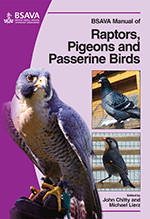
Full text loading...

Intramuscular injection is the most common route by which injectable drugs are given to captive birds. In general injections are given into the pectoral muscle mass rather than the leg because: the pectoral muscle mass is larger; and there are concerns over the presence of renal portal venous system resulting in effects on the drug pharmacokinetics. This chapter examines injection techniques, crop tubing, beak trimming, nail/talon trimming, ring removal, imping and euthanasia.
Basic techniques, Page 1 of 1
< Previous page | Next page > /docserver/preview/fulltext/10.22233/9781910443101/9781910443101.8-1.gif

Full text loading...













